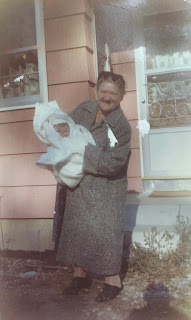The last two days of news from Texas have Margaret Atwood's "The Handmaid's Tale" on many a woman's minds.
First, restrict the vote, in particular to ensure the 3 million unregistered voters of color do not have access to the ballot.
Then pass a law encouraging citizens to turn women and health care providers (and Uber drivers!) in for abortion.
Finally, pass another law allowing same citizens to carry guns without permits.
Can you say "white male vigilantes" are in charge in Texas?!
With deep implications for democracy in the rest of this nation.
"The Handmaid's Tale" is, of course, not the only art work depicting the horrors of patriarchy out-of-control -- or the ways misogyny and racism intersect to maintain white male power structures.
Shakespeare had his eye on these dynamics 400 years ago when he wrote "Othello." Paula Vogel amplified this story and gave it even deeper meaning in her 1993 take on it from the women's perspective, "Desdemona, the story of a handkerchief." Most recently and certainly not least, in 2011 eminent author Toni Morrison took on Desdemona's relationship with the African nurse who raised her.
Opera House Arts in Stonington was therefore rather prescient, really, in booking a double bill of "Othello" and "Desdemona, a play about a handkerchief" as part of their 2021 outdoor/pandemic summer season.
Since "Othello" is read in many a high school English Language Arts class, I hope you are familiar with its story of an embittered, resentful White man, Iago, lying and scheming to bring down his heroic Moorish/Black general, Othello, by falsely enraging his jealousy to the point of murdering his own beloved wife, Desdemona.
It's an all-too-classic story, unfortunately, of how the power struggles between men often lead to domestic and sexual violence and the murder of women.
Vogel, an award-winning playwright, correctly determined 30 years ago that the female characters voices needed to be centered and heard: not only Desdemona's, but her servant Emilia's, wife to Iago; and Bianca's, the courtesan lover of competing soldier Cassio. As the play gives them place and power, I was unsurprised to find that play's white male reviewers pretty much universally loathed it.
Yet what Vogel achieves, with excellent direction at OHA by multidisciplinary feminist theater maker Julia Sears, is a searing, funny, and yes, painful expose of women's experiences, relationships, and conversations, unseen by the male gaze in the kitchens and laundry rooms that remain a far cry away from legislative halls.
Vogel portrays youthful love interest Desdemona (Ellis Greer) as the spoiled and entitled princess she historically most likely was -- but also an entrapped woman seeking rebellion by controlling her own sexuality. She is anchored by her working class servant, Emilia (Esther Williamson), who in Vogel's world is able to well and humorously articulate the patriarchal vise in which all three women find themselves. Williamson is particularly masterful in her delivery of her disgust with Desdemona's class-based entitlement, and her analysis of the danger her lady's behavior is creating for them both. As Bianca, Sears' choice of Imani Youngblood to return to OHA in this small but vital role also opened up live musical opportunities that deepened the overall emotional impact of the production.
Vogel, Sears, and these three women provided, for three weeks of August in the woods of Nervous Nellie's on Deer Isle, a sharp and too hidden window into women's experiences behind the scenes of the male dominant culture -- one we desperately need to experience, understand, and listen to if we hope to fight off the violent, controlling, and armed Texas rangers in their wish to remain ascendant.
#maine
#liveperformance
#shakespeare
#othello
#texas
#desdemona
#paulavogel
#abortionrights






